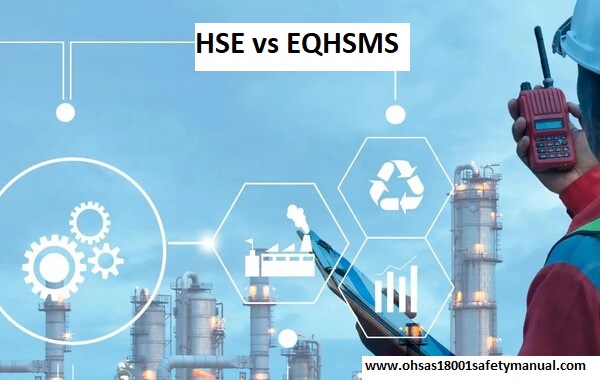Health, Safety, and Environment, or HSE, is a combination of tools, methods, and processes designed to prevent employee health issues and injuries while simultaneously safeguarding the environment. In today’s world where organizations and industries are expanding at an unbelievable rate ensuring that workers and the environment are vital concerns. This is where Health, Safety, and Environment come into play.
An Integrated Management System (EQHSMS) combines all of an organization's systems and procedures into a single framework, allowing the organization to function as a single entity with common goals. Organizations frequently focus on management systems individually, often in silos and even in conflict. A quality team is concerned with the QMS; often, an EHS manager handles both environmental and health and safety concerns and handles safety, health, environment, quality, etc.
Unravelling HSE: Prioritizing Health, Safety and Environment
HSE, which stands for Health, Safety, and Environment, is a focused approach to guaranteeing individuals' well-being, protecting the environment, and fostering a safe working environment inside an organization. This framework operates as a stand-alone system, specifically developed to address health concerns and environmental impact.
At its core, HSE embodies Three Key Pillars
Health: Health relates to employees' physical and mental well-being. It entails recognising and controlling occupational health threats such as chemical exposure, noise, and ergonomic concerns.
Safety: Safety is the prevention of workplace accidents and injuries. It entails recognising and managing occupational safety threats such as slips, trips, falls, electrical, and fire risks.
Environment: This refers to the protection of the environment from the negative effects of workplace operations. It entails recognising and addressing environmental dangers like pollution, waste management, and resource conservation.
Exploring EQHSMS: A Holistic Integrated Management System
In contrast, the Integrated Management System (EQHSMS) takes a broader approach by combining multiple management systems, such as quality, environment, health, safety, and other relevant domains, into a single framework. Unlike HSE, EQHSMS is a holistic strategy that strives to streamline processes, eliminate redundancies, and increase efficiency by integrating numerous standards and criteria into a unified system.
Key Characteristics of EQHSMS System
- System Integration: EQHSMS amalgamates diverse management systems such as Quality management (ISO 9001), Environment Management (ISO 14001), Occupational health safety (ISO 45001), and potentially others, creating an integrated structure that optimizes resources and processes.
- Comprehensive Approach: EQHSMS ensures a holistic view of an organization’s operations. It aligns different systems, processes, and objectives to minimize conflicts and enhance overall performance across multiple domains.
- Synergy and Collaboration: By integrating various systems, EQHSMS facilitates synergy between departments and disciplines, fostering collaboration and ensuring a more streamlined approach towards achieving organizational objectives.
Distinguish Between HSE and EQHSMS
While both HSE and EQHSMS have the same goal of increasing organizational performance and safety, they differ greatly in scope and methodology.
Scope: HSE focuses primarily on health, safety, and the environment inside an organization, whereas EQHSMS incorporates a larger range of management systems integrated into a single framework.
Depth of Integration: EQHSMS combines multiple management systems, resulting in a more complete approach to operational efficiency, whereas HSE focuses on health, safety, and environmental issues.
Implementation Complexity: EQHSMS implementation can be more complex due to the integration of multiple systems, but HSE implementation may be simpler due to its specialised focus.
In conclusion, while HSE focuses on health, safety and environmental aspects, EQHSMS takes a more holistic approach by integrating various management systems. Organizations can opt for either framework based on their specific needs, aiming for a targeted focus on HSE or a streamlined approach through EQHSMS to enhance operational efficiency and safety standards.
For HSE Manual
Global Manager Group is a leading and experienced occupational health and safety consultant that provides ISO 45001 safety manuals, templates, audit checklists, a Complete occupational health and safety standard documentation kit, and an ISO training presentation kit. The HSE Consultants’ team has designed a ready-to-use HSE manual for ISO 14001 and Occupational Health Safety 18001 certification. They have a global reputation as professional HSE certification consultants since 1991. Other HSE documents, such as auditor training kits, procedures, policies, SOPs, templates, EHSMS forms, and audit checklists, are compatible with leading certifying bodies.


No comments yet